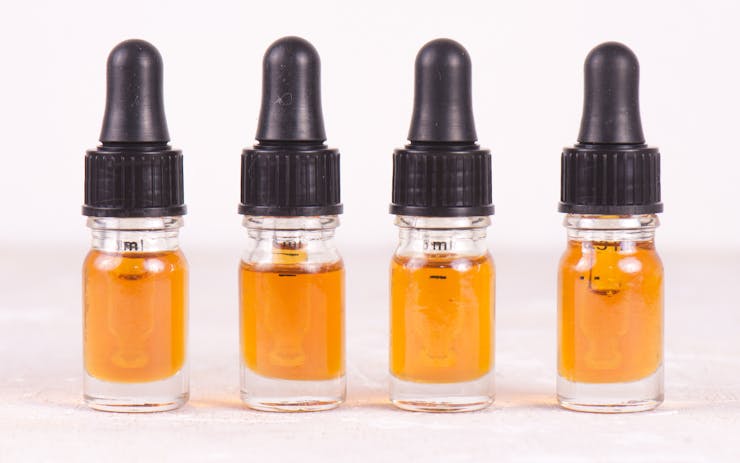A Parent’s Guide to Pediatric Seizures and Cannabinoid Medicine
Leafly does not offer medical advice – this is for informational and educational purposes only, is not intended to be a substitute for medical advice, diagnosis, or treatment, and is not intended to cover all possible uses, directions, precautions, or adverse effects.
You’ve read the research. You’ve talked with other parents. And you’ve decided to try cannabis for pediatric epilepsy. What is the best way to set up a dosing regimen for your child that will be most effective?
Assuming that you already have a neurologist you trust who is open to medical cannabis, the next step is to find a cannabinoid medicine specialist with experience treating seizures and who is also willing to communicate with your child’s neurologist to develop a clear treatment plan. The Society of Cannabis Clinicians is a good resource for finding a provider.
It’s important to only buy lab-tested cannabis preparations (or have them tested independently) so you know the concentration of cannabinoids and to be sure that it’s contaminant-free. It’s also critical to make sure that the product you choose will be available to you consistently and reliably in the future.
That product will likely be in the form of a liquid extract, usually in an oil base. The oil can be administered by drawing up a certain volume in an oral syringe, similar to how you measure children’s Tylenol or Advil in order to get the correct dose for your child. The number of milliliters (mls) you give will depend on the concentration of cannabinoids in the product (this information will be provided for any lab-tested product).
Dosing and Record-Keeping
After you’ve acquired the right product, you’ll need to go through methodical trials to determine the optimum dosing for your child. Start a journal in which to record the dose, times of doses, and your child’s response. Record the frequency and intensity of your child’s seizures, whether they present differently in any way, how long they last, and how much time it takes your child to recover. Make a note of any positive or negative changes that you see outside of seizure activity, such as changes in cognition and behaviors. Bring this information back to your neurologist and cannabinoid medicine specialist to help guide subsequent dose adjustments or other cannabinoid product trials.
While the ultimate goal with any anti-seizure medication is to reduce the patient’s seizure burden, improving quality of life by other measures should be carefully considered.
As with any other medication, it is best to start on a low dose and increase gradually over weeks. It may take several weeks to reach an optimal dose for your child. If your child shows a positive response, hold at that dose for two weeks to assess seizure control and side effects. If seizures persist, the dose may be again slowly increased. When the optimal dose is exceeded, there may be a point at which you see the benefits start to diminish (increased side effects or increased seizures). Side effects can include decreased appetite, irritability, or tiredness. When you notice this, simply reduce the dose back to last level where you saw a positive response (that’s why keeping a journal is so important).

The medicinal benefits of cannabis may start to diminish as the dose is increased. (Dr. Sulak/Healer.com)
Let me emphasize the need for a solid plan and a methodical trial where every 7 -10 days (or whatever is appropriate for your child), you specifically increase the cannabinoids by an amount that you’ve agreed on with your practitioner.
After getting started, parents often report improvements in their child’s ability to think and communicate, an emergence of their personalities, and an increased ability to learn new things, even before they reach a dose that reduces their seizure burden. Cannabinoids can also improve behavioral symptoms in pediatric patients with neurologic conditions. While the ultimate goal with any anti-seizure medication is to reduce the patient’s seizure burden, improving quality of life by other measures, such as improvement in sleep, cognition and behavior, should be carefully considered.
In summary, to start your child’s cannabinoid medicine regimen, find a neurologist, a cannabinoid medicine specialist, and a trusted source for reliable, safe formulations, and set up journal. Over the last four years I’ve met with more than 100 families who have consulted me to find out if cannabis is the right medicine for their child who suffers from seizures. They ask me what I would do if my children had this condition. Would I turn to cannabinoids? The answer is yes. This would be one of the first treatment choices for my child.
Content for this article is based on the Pediatric Seizures Video Guides at Healer.com, a medical cannabis patient education resource. Find the entire video series and transcripts at healer.com/pediatric-seizures-video-guide.
Lead image: rgbspace/iStock





